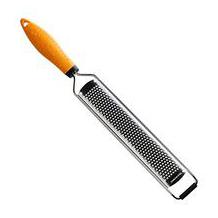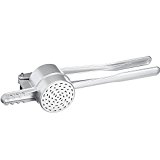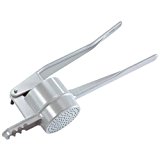Kitchen scales purchasing advice: how to choose the right product
- The most important facts in brief
- Kitchen scales are available as analogue and digital devices, whereby most household scales now function digitally.
- There are sometimes considerable differences in the maximum load capacity. Some digital scales can now carry a load of up to 15 kilograms.
- Many models can be used multifunctionally, as they are generally suitable for weighing other small items such as letters or parcels.
- Additional functions such as the display of the time, a timer function and a tare weighing function make kitchen scales a universal kitchen helper.
What are the advantages of using a kitchen scale?
A functional scale in the home helps cooking and baking enthusiasts to weigh ingredients precisely down to the exact number of grams. In particular, the amount of baking ingredients such as flour or sugar can be determined precisely. In this way, the weighed amount of ingredients matches the recipe exactly, so that a good end result can be achieved.
Not only sugar and flour, but also coffee can be measured out to the gram with a kitchen scale. In a broader sense, a kitchen scale can be useful for adhering to nutrition plans and dietary guidelines calculated to the gram. Another advantage is the weighing function, which makes it possible to weigh all ingredients in one step or to put all ingredients directly into a bowl. All in all, the household scale facilitates many cooking and baking processes and saves time.
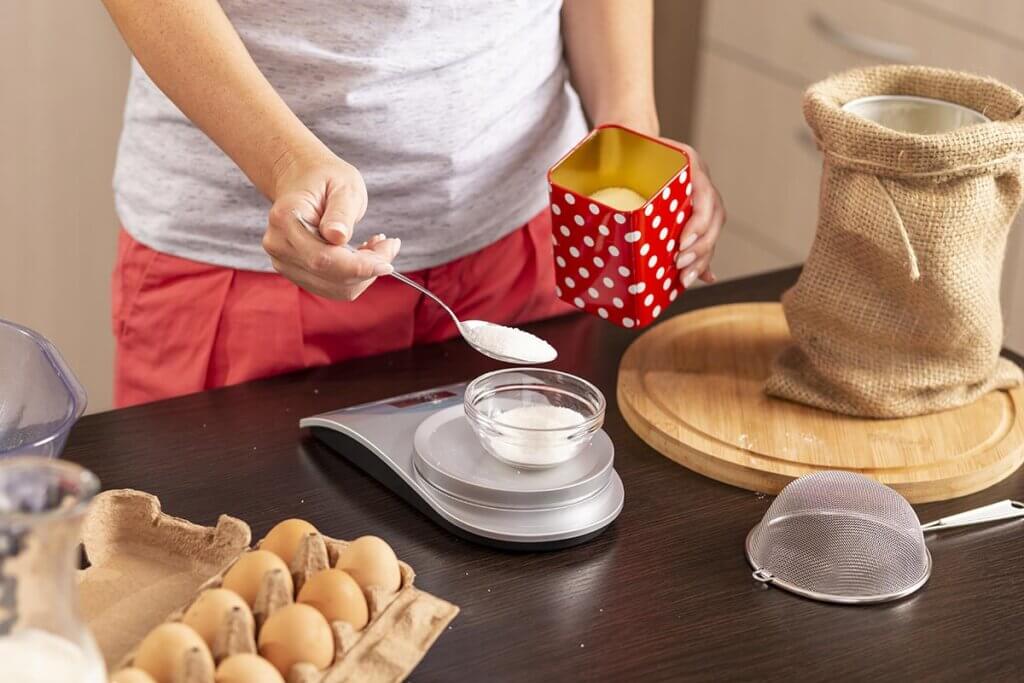
Kitchen scale models: digital vs. analogue kitchen scales
Kitchen scales are available in analogue or digital versions. Before buying, you should therefore weigh up whether a digital scale or an analogue device fits better in your kitchen. If you attach great importance to accurate measuring results, a modern digital scale is recommended.
How is an analogue kitchen scale constructed?
A mechanical kitchen scale works without batteries and displays the results on a scale. Such analogue scales often prove to be very stable against external stress. At the same time, they measure less accurately than digital scales, which is why they are not the first choice for gram-precise measurements. However, if you mainly want a nostalgic, defect-resistant scale that can be operated independently of the mains or without batteries, analogue kitchen scales are a good fit for your needs.
Pro points
- Nostalgic, attractive design
- Sturdy material, less susceptible to defects
- Works anywhere without mains power
Drawbacks
- Bulky unit with high weight
- Low load capacity
- Delivers inaccurate measurement results
What are the characteristics of a digital scale?
Digital scales are usually compact, small electrical devices with an LCD display. Since they are battery-operated, they are more susceptible to defects than analogue models. On the other hand, this type of household scale provides very accurate measurement results with a deviation of no more than a few grams. For this reason, such scales are particularly practical for amateur cooks and bakers who want to obtain the most accurate measurement results possible. A digital scale with an illuminated display that is easy to read in the dark is also ideal for people with impaired vision.
Pro points
- Delivers precise measurement results
- Compact dimensions allow space-saving storage in the kitchen
- Greater range of functions
Drawbacks
- Less stability
- Models with illuminated display
Buying criteria: What you should look for when buying a kitchen scale
When buying a kitchen scale, there are various quality criteria to consider. Our buying guide will help you to better assess important criteria and include them in your purchase decision.
Display of weight units: Scale or digital display
A kitchen scale shows the results either manually on a scale that deflects to the respective value or on a digital display. It should be noted that analogue household scales have inaccurate graduations, which are often given in 50-gram increments. Such scales are generally suitable for baking and cooking as long as their deviation does not exceed 10 to 20 grams. With a scale division of 50, you must assume that you may no longer be able to estimate the correct gram quantity for the recipe.
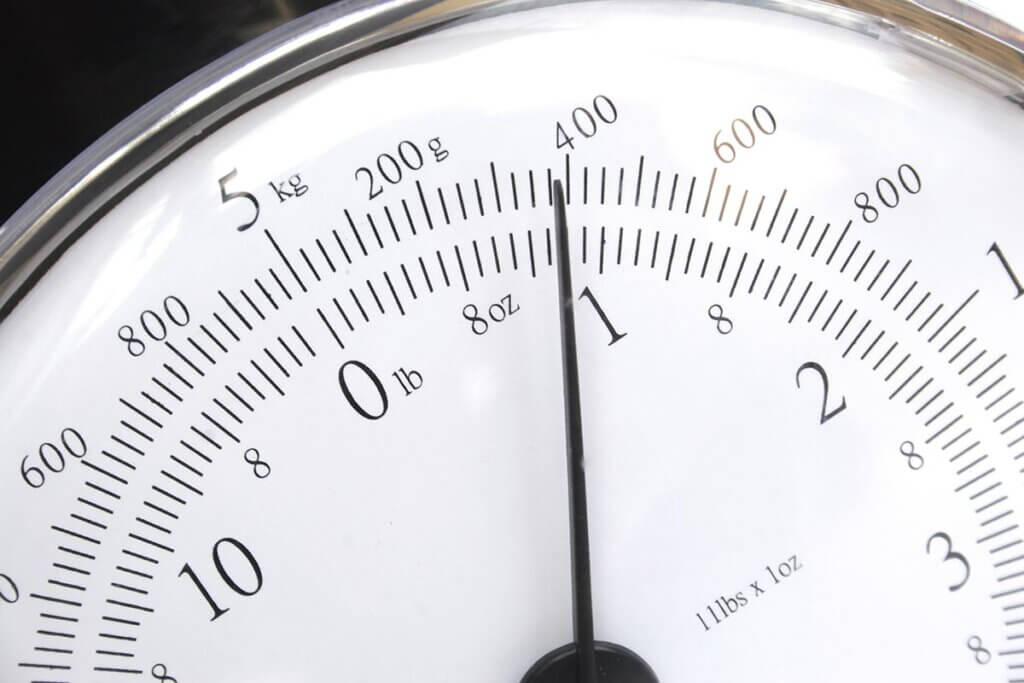
If you want to read off the weight units as accurately as possible, a digital scale might be the better choice. In addition to these digital scales, there are so-called fine scales whose graduations are even in 0.1 gram increments. They are particularly suitable for letters and small packages, as these sometimes need to be weighed to the gram.
Material: Stainless steel scales are robust and less susceptible to rust.
Analogue and digital kitchen scales often also differ from each other in terms of their materials. For example, digital scales consist of a type of plastic housing and a weighing surface made of stainless steel or metal. Plastic can fade over time. Models made of stainless steel in particular have a high-quality look that enhances the kitchen area. Another advantage is the stability of the material. For households with children, such a digital scale often proves to be a better solution, as stainless steel withstands everyday stress and is unbreakable.
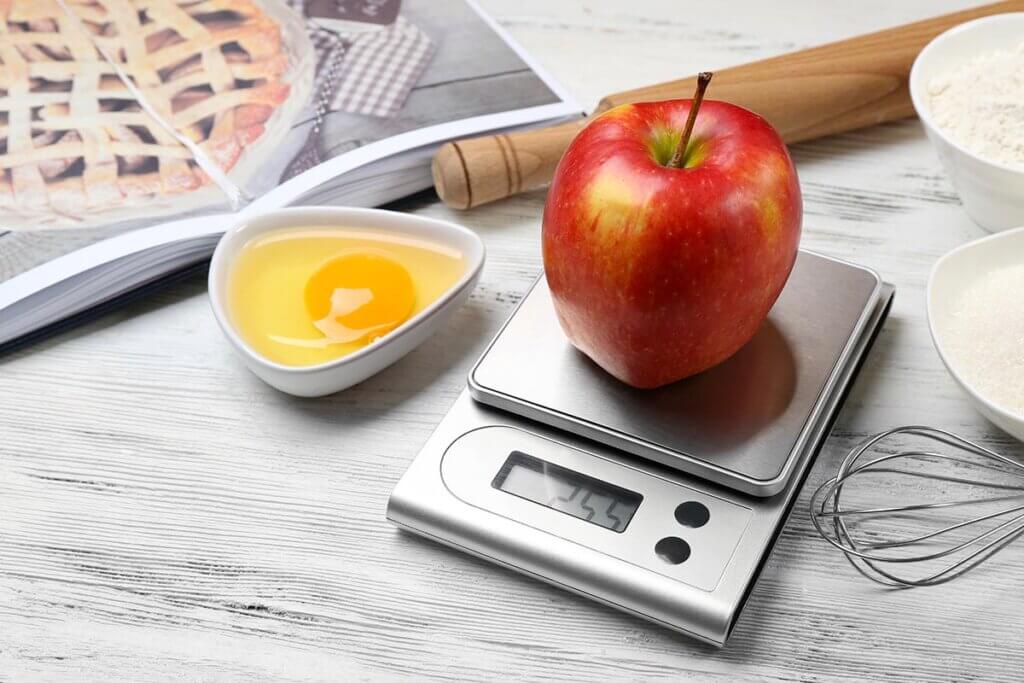
There are also kitchen scales that are equipped with a removable measuring surface made of glass or a glass plate. Since these weighing surfaces are often particularly easy to clean in the dishwasher, they are recommended for people who want to have little maintenance effort with household appliances.
Maximum load capacity: Some models have a capacity of up to 15 kilograms
Kitchen scales are sometimes characterised by a high load capacity, which makes it possible to weigh several heavy ingredients. Before buying, you should therefore consider what kind of food or items are to be weighed. If the kitchen scales are only used for cooking and baking, a maximum capacity of five kilograms is sufficient. If the food is very light, it can even be weighed by a household scale with a maximum capacity of three kilograms. When it comes to weighing heavy packages, a kitchen scale with a higher capacity is needed. However, a suitcase scale can also be used here, for example.
Size and weight: Smaller kitchen scales as space-saving household appliances
Dimensions and weight do play a role in kitchen scales, because they determine how handy the household appliances are. If you want to store the kitchen scales in the cupboard when not in use, you should prefer a compact model. In this respect, digital scales, which usually weigh less than one kilogram, prove to be advantageous. In addition, these models are very compact, so they take up little space in the kitchen.
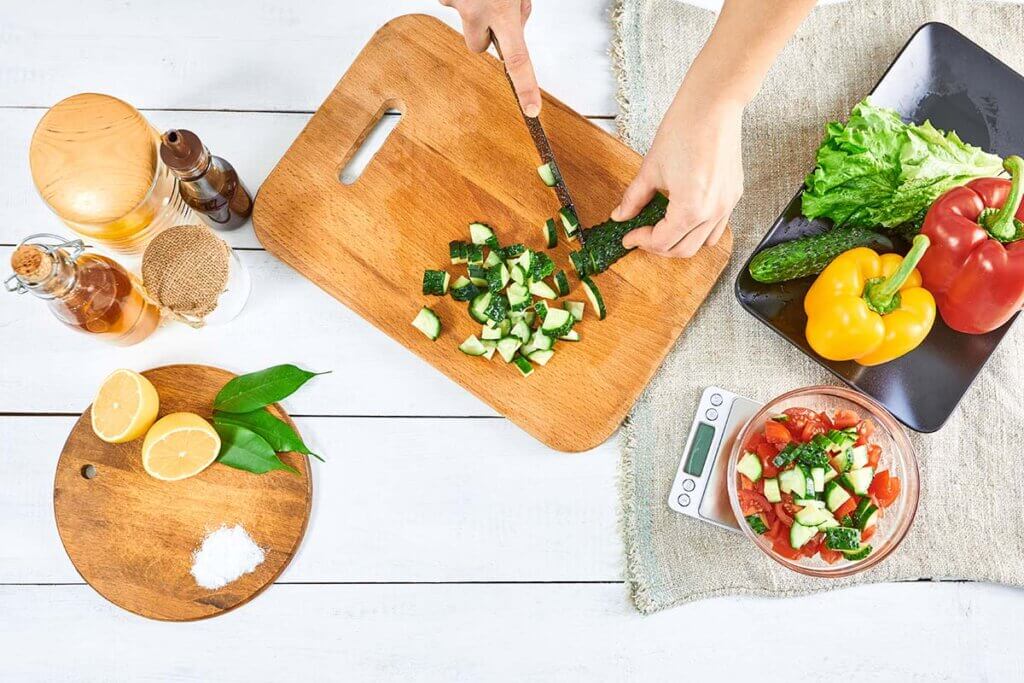
Mechanical scales are comparatively heavy, sometimes weighing two kilograms. At the same time, these analogue household appliances often have a greater overall height because their weighing bowls, which are included in the scope of delivery, take up additional space.
Stability and steadiness
Basically, household scales are extremely stable due to their robust housing. However, there are small differences between analogue and digital scales in terms of stability. Since analogue household scales are often made of steel, they can easily withstand major vibrations. Digital scales are often not as resistant, but have non-slip feet. These ensure a secure grip on the surface even during hectic work processes such as mixing ingredients. This means that the ingredients neither slip off during weighing nor does the small household appliance simply fall over.
Weighing bowl as an important accessory
The numerous kitchen scales in the comparison differ greatly in their scope of delivery. While some of these household appliances are supplied without accessories, others come with enclosed weighing bowls. These small weighing bowls, which are available in different materials, can be placed on the kitchen scales. Often, their design is fully coordinated with the kitchen scales so that the overall picture is harmonious. One thing to bear in mind is the limited capacity of the scale trays. It depends on the ingredients whether the available capacity is sufficient for the intended use.
Removable weighing pan recommended
It is advisable to look for a model with a removable weighing pan. Such a removable weighing pan makes it easier to fill the ingredients flexibly. It is also easier to clean than integrated weighing bowls, and is often even dishwasher-safe.
Cleaning effort: Flat digital scales are easier to clean
In general, manufacturers try to offer scales for sale whose cleaning effort remains within manageable limits. The same principle applies to the accessories: weighing trays in particular are made in such a way that you can clean them in the dishwasher without any problems. The fewer corners and edges the preferred household scale has, the more manageable the associated cleaning effort. High scales that are equipped with a weighing pan are associated with a greater degree of soiling. The same applies to analogue models in retro design, which have a much larger surface area compared to compact digital scales.
Cleaning tips
External dirt can be easily removed with a damp cloth. However, care should be taken not to use too much water: If the liquid gets into the inside of a scale, it can damage it.
Operating mode: mechanical-analogue or electrical-digital
The operating mode is another important purchase criterion that should be included in the preliminary considerations. Ideally, a portable scale needs neither batteries nor a power supply. In this respect, analogue models are superior to digital scales, as they do not need any power supply at all. With digital scales, it depends on whether they are battery-operated or run on mains power. Usually, you need either AA or AAA batteries to operate a digital scale. Recently, in addition to the tried and tested models, solar-powered scales have become available that charge their battery through solar radiation.
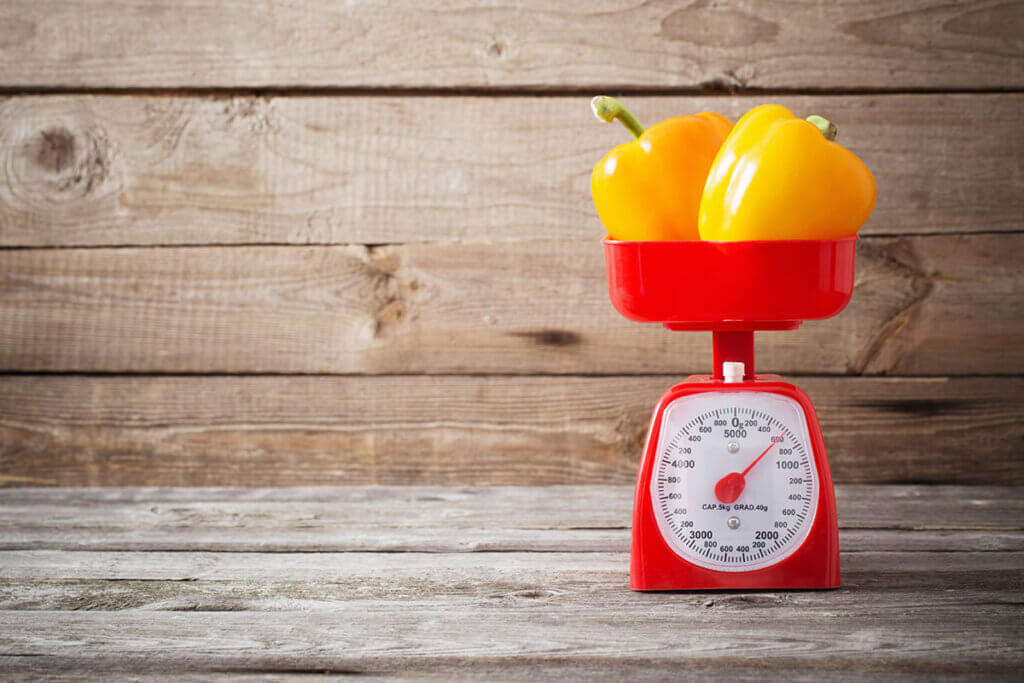
Practical functions
The range of functions of digital kitchen scales goes beyond simply weighing ingredients. While the range of functions varies depending on the model chosen, there are some basic features that are common to modern kitchen scales:
Time: With their LCD display, digital scales are able to show the current time either at the touch of a button or in standby mode. With analogue scales, the time can often be read on the additional built-in clockwork. This mode of operation is particularly useful in kitchens where there is no additional clock.
Timer: In addition to the time, many models have an adjustable timer function. This ensures that the required guide times are adhered to during cooking and baking. As soon as the time set in the timer has elapsed, an acoustic alarm signal sounds as a notification.
Tare function: With the tare function, also known as the additional weighing function, many analogue or digital scales can be reset to zero after weighing. This function is of great advantage with loose food. Sugar, flour and other ingredients can be weighed one after the other without having to empty the ingredient bowl in between.
Hold or memory function. Memory function: A kitchen scale equipped with this special feature is able to store the last measurement result for later. This makes it easier to read the result a second time at the end, just to be on the safe side. In general, this function is also useful when using large bowls that cover the display.
Conversion function: Some scales have a practical conversion function in addition to a liquid meter. This is very useful for international recipes that involve other units of measurement, such as pounds or the American ounce. Research or mental arithmetic is then no longer necessary, as the kitchen scale automatically converts the weight into the desired unit. Below we give some examples of units that are not common and show a conversion value.
| Foreign unit | Metric unit |
| 1 ounce | 28 grams |
| 1 pound | 450 grams |
| 1 Fluid Ounce (fl.oz.) | 30 millilitres |
| 1 Tablespoon | 15 millilitres |
| 1 Teaspoon | 5 millilitres |
| 1 Cup | 240 millilitres |
| 1 Pint | 470 millilitres |
| 1 Quart | 950 millilitres |
| 1 Gallone | 3,8 litres |
Voice function: A kitchen scale with a voice function makes it easier for visually impaired people or seniors with impaired vision to determine the appropriate weight. Scales with this function read out the grams aloud, so there is no need for tedious reading on the display.
Automatic switch-off: The built-in automatic switch-off contributes to a longer service life of the device. It is activated whenever the digital scale is not used for a while. However, the preset time periods vary greatly, so some models switch off after just one or two minutes of idle time.
Nutritional value analysis: Nutrition-conscious people as well as patients who, for example, have to pay attention to certain nutritional values as part of a medically prescribed change in diet, benefit from the nutritional value analysis. In addition to the weight of the food, such a function reveals, for example, the calorie and carbohydrate content, the fat content or the protein content. Special diet scales that provide information on vitamins and minerals are even more detailed.
Battery level indicator: Battery-operated kitchen scales have a special function that sends a message when the battery is exhausted. This means that an empty battery can be replaced in good time so that the scales do not run out of power in the middle of use.
Smartphone app: Thanks to the achievements of modern technology, some of the high-end models can be connected to a smartphone. Recipes called up via the installed app are sent directly to the kitchen scales via Bluetooth. However, only a few models are equipped with such a function. In addition, the respective kitchen scales are very expensive and not compatible with every smartphone.

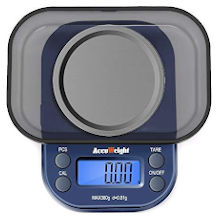
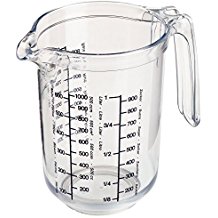
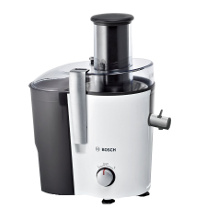

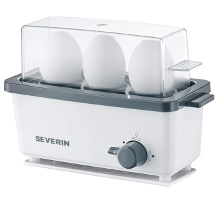
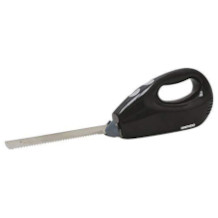
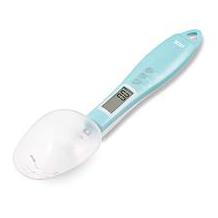
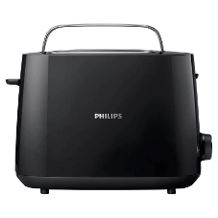
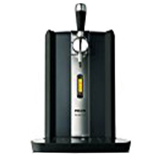
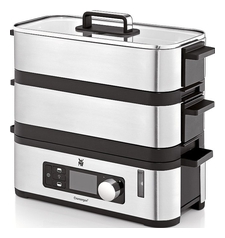








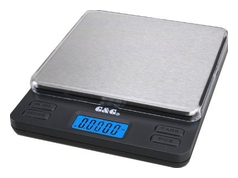
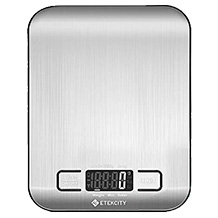

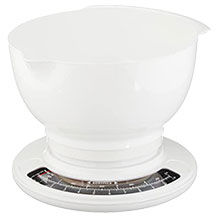

 20,243 reviews
20,243 reviews




